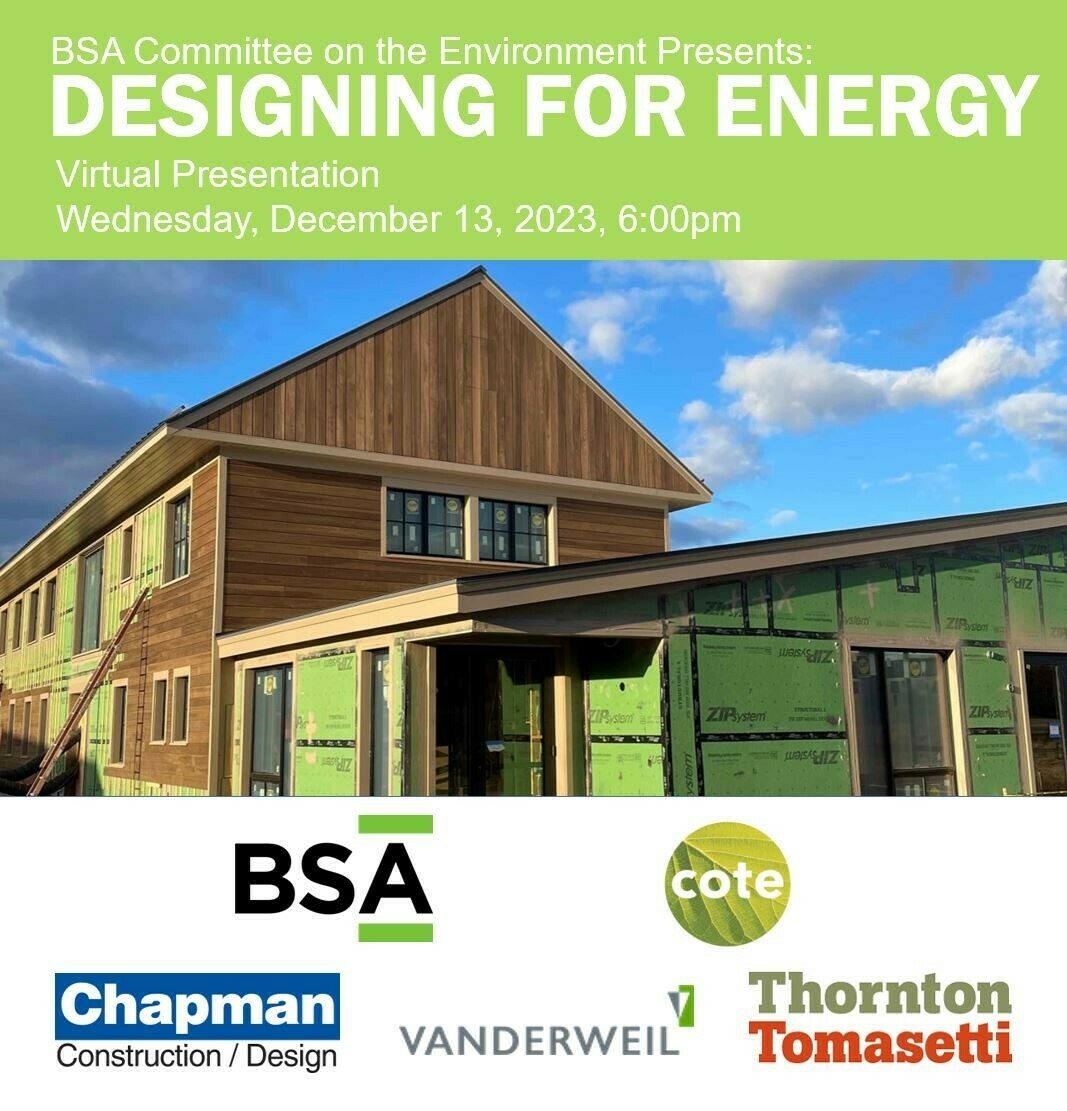Event
COTE: Designing for Energy (Virtual)

-
COST
Free for BSA members, $10 for nonmembers
-
TYPE
CEs
-
AUDIENCE
Professionals
-
ACCREDITATIONS
1.5 LU AIA credits available.
Event Description
Patrick Murphy, Principal and Director of Sustainability at Vanderweil Engineers, John Hyde, Senior Sustainability Manager at Chapman Construction, and Heather Walters, Vice President in the Sustainability Practice at Thornton Tomasetti will join us to share the ways in which designing for energy is a fundamental part of design and construction today as well as how our understanding of energy and its relationship to Building lifecycle carbon can impact how we can prioritize making the biggest impact beyond EUI. John will discuss the considerations that must be taken into account when constructing highly efficient, zero net energy buildings. Heather Walters will outline how considerations of whole life carbon (embodied + operational) can impact the decisions we make today while taking a transitioning power grid into consideration as a key part of the design decision making process.
This presentation will provide a high-level overview of the Framework’s principles as they relate to the Designing for Energy measure. This overview will be followed by presentations from practitioners demonstrating how the fundamentals of this measure are incorporated into the design and construction process with a focus on the successful execution of highly efficient buildings today and suggestions for thoughtful planning considerations for design moving forward. The session will conclude with a moderated discussion.
Presenters
Patrick Murphy PE, LEED AP BD+C, CHPC | Principal and Director of Sustainability, Vanderweil Engineers
John Hyde LEED AP BD+C, CHPC | Senior Sustainability Manager, Chapman Construction
Heather Walters, PE | Vice President, Sustainability, Thornton Tomasetti
Learning Objectives
Identify opportunities to take the impact of carbon into account when thinking about the role operational and embodied carbon play in the design decision making process;
Use data as a basis for decision making on an integrated, whole building scale;
See tangible examples of how energy efficient design is taken into consideration in the construction process
Explain how architects can leverage an understanding of the construction process to plan for energy efficient design that is achievable when built.